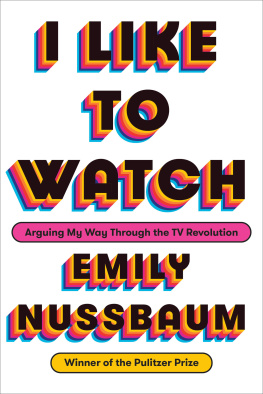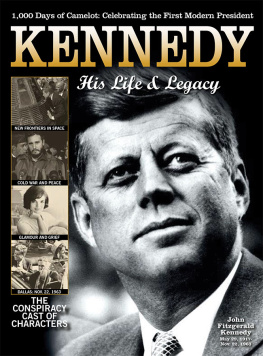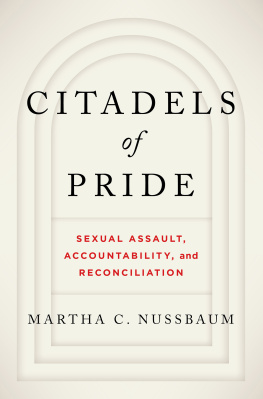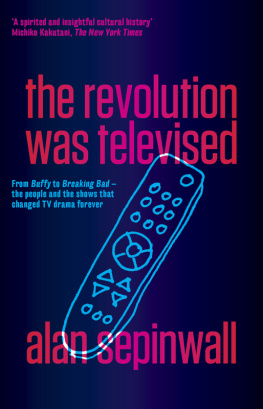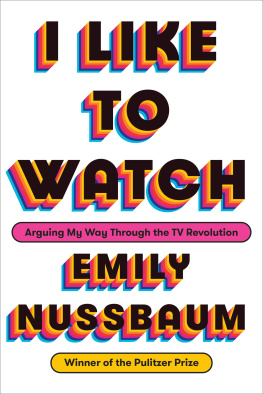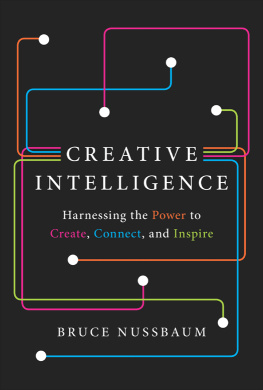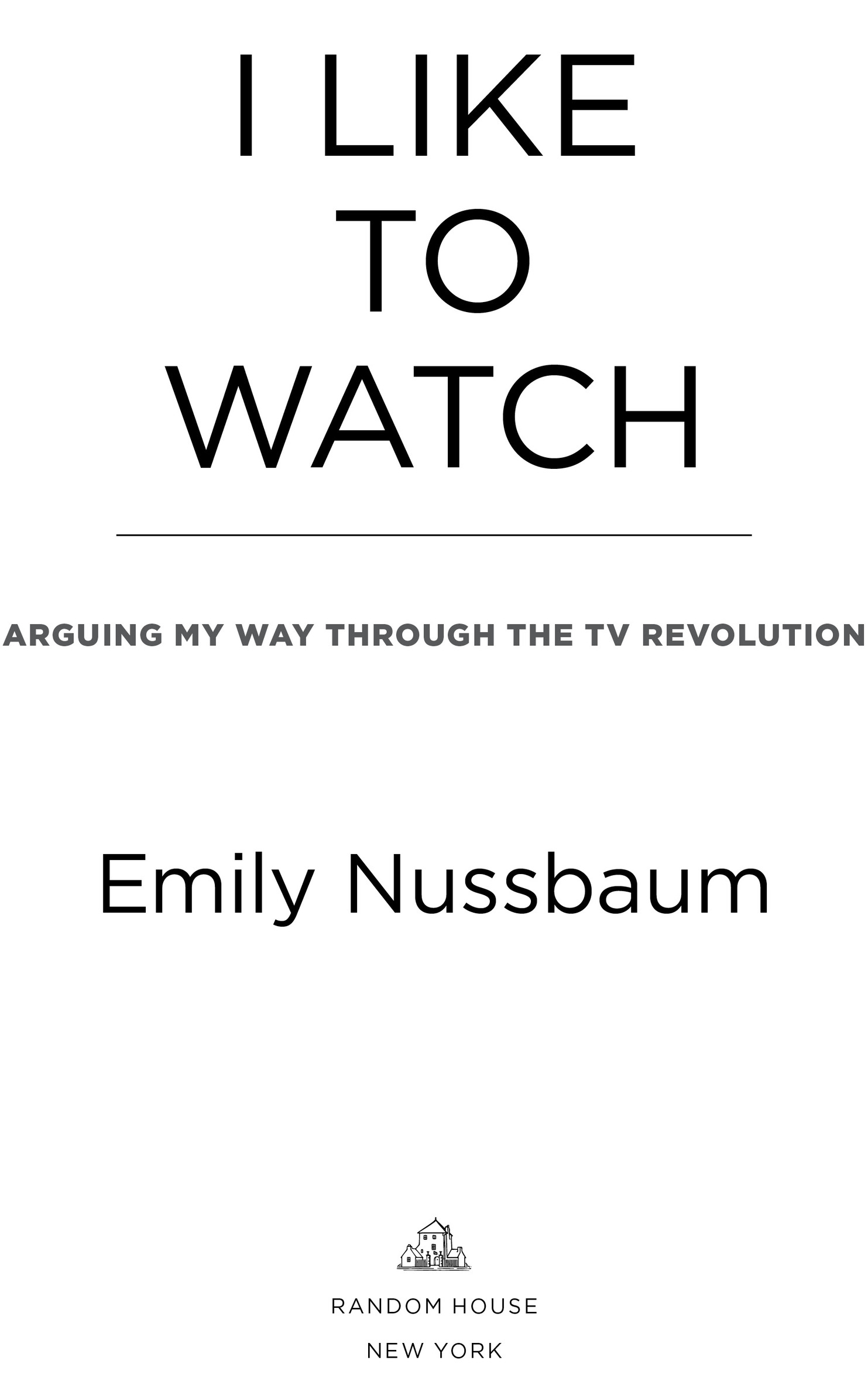This is a book celebrating television, but its not a Top 10 listor a Top 20 list, or any other kind of rating system. In other words, its not a book about my favorite shows. (If it were, it would surely include an essay on Slings and Arrows.) I like some of these shows, I love others, and a few are not my cup of tea. These reviews are simply the ones that I thought held up the best as criticismand also, the ones that most effectively made my argument about TV.
THE BIG PICTURE
How Buffy the Vampire Slayer Turned Me Into a TV Critic
What happens when your side wins the fight, the drunken cultural brawl that youve been caught up in for nearly two decades? And then the rules change, midway through? Thats the crisis that Im currently facing, when it comes to the beauty and powerand lately, even the definitionof television as an art form.
When I first began watching television, there didnt seem to be much to argue about. Like many children of the seventies, I grew up sitting cross-legged in front of a big console in the living room, singing along to The Electric Company while my mom made Kraft Macaroni & Cheese. I dug Taxi, I loved M*A*S*H. In my teens, I memorized Monty Python sketches with my friend Maria. But I also regarded TV the way that Americans had been taught to, since the 1950s. Television was junk. It wasnt worthy of deep thought, the way that books or movies might be. It was something that you enjoyed, then forgot about. It wasnt until my thirties that I had what amounted to a soul-shaking conversion, on the night that I watched Sunnydale High School principal Bob Flutie die, torn to bits by hyenas.
At the time, in the spring of 1997, I was a literature doctoral student at NYU, foggily planning on becoming a professor, maybe a Victorianist, but anyway, somebody who read for a living. Every morning, I woke up, flopped onto the sofa, and opened up yet another 900-pager. Across the room was an old-fashioned console TV, a dinosaur even for the era, with a broken remote control, so in order to watch my first episode of Buffy the Vampire Slayer, I had to physically walk across the room, then click the circular dial over to Channel 11, The WB, a brand-new netlet, and then walk all the way back to the sofa.
Walking across the room to change the channel was still a normal thing to do, in 1997. It had been nearly sixty years since the first television (spookily nicknamed the Phantom Teleceiver) launched at the 1939 Worlds Fair, and yet the medium waswith a few advances, like the addition of color and the still-tentative expansion of cablenot that different from what it had been in the 1950s, when families gathered to watch Milton Berle. Shows aired once a week. They were broken up by ads. When the ads were on, you peed. When they ended, someone in the other room would yell, Youre missing it! and youd run back in. If you loved a particular show, you had to consult the elaborate grids in the print newspaper or in TV Guide to know when to watch: ALF (CC)Comedy. ALF is upstaged by a loveable dog that followed Brian home, so he gives the pooch away to a crotchety woman (Anne Ramsey).
The main thing, though, was that television went away. It was a disposable product, like a Dixie Cup. Although scripted television hadnt aired live for many decades, it still felt live. You could watch rental movies on your VCR (and for a few years, they were everywhere) but most people I was friendly with didnt regularly pre-program theirs to record much TV, because doing so was such a pain: spinning three plastic dials, for the day, the hour, and the minute. Each videotape held only a few hours of programming; rewinding and fast-forwarding were clumsy processes (and pausing might break the tape). There were no DVDs yet, let alone DVRs. Even if you were an early Internet adopter, which I was, dialing in was a grindingly slow, unreliable processand when you did connect, with the hostile shriek of static that we optimistically called a handshake, no videos showed up, just a wall of blinking neon fonts. Nothing, ever, arrived on demand.
This glitchy, ephemeral quality, and the ads that broke up the episodes, were a major part of TVs crappy reputation. This part may be hard to remember, even if you lived through it. But just before the turn of the centurynearly universally, by default, and with an intensity thats tough to summon up nowtelevision was viewed as a shameful activity, as chewing gum for the eyes, to quote drama critic John Mason Brown. This was true not only of snobs who boasted that they didnt even own a TV; it was true of people who liked TV. It was true of the people who made it, too. TV was entertainment, not art. It was furniture (literallyit sat in your living room) that helped you kill time (it was how to numb lonely hours while eating a TV dinner, shorthand for a pathetic existence). TV might be a gold mine, economically speaking, but that only made it more corrupt. If you were an artist, writing TV was selling out; if you were an intellectual, watching it was a sordid pleasure, like chain-smoking. People still referred to television, with no irony, as the boob tube and the idiot box. (Some people still do.)
This is not to say there were no good shows. Critics praised (and, often, overpraised) the grit of Hill Street Blues, the nihilistic wit of Seinfeld, yadda yadda yadda. In the mid-90s, there were several major breakthroughs in the medium, among them the teen drama My So-Called Life and the sci-fi series The X-Files. But among serious people, even the best television wasnt considered worthy of real analysis. This was particularly true among my grad-school peers, the thinky guys whom I had privately nicknamed the sweater-veststhe men who were also, not coincidentally, the ones whose opinions tended to dominate mainstream media conversation. For them, books were sacrosanct. Movies were respected. Television was a sketchy additive that corporations had tipped into the cultural tap water, a sort of spiritual backbone-weakener.

